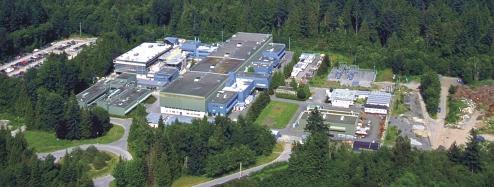
Since the 1990s, TRIUMF has secured its operating funds through a 5-year contribution agreement with National Research Council Canada. The present cycle ends in 2010 and efforts to develop the plan for the 2010-2015 are well underway. I write to you about the next step in that process.
Owned and operated by a consortium of Canadian universities, TRIUMF draws on those combined talents and resources to pursue those science questions which individual institutions cannot pursue on their own. In this way, TRIUMF is a partner to the Canadian scientific community and helps “the best to do the best.” It is natural, therefore, for the laboratory to look to its community stakeholders for guidance in preparing its vision for the future.
To engage the community broadly, TRIUMF Director Nigel S. Lockyer, appointed a 5YP steering committee in autumn 2007. This steering committee is charged to design and oversee an inclusive process for identifying the key strategic priorities for TRIUMF in 2010-2015. Based on meetings of the TRIUMF Users Group and other workshops, discussions, and reports of the community, the steering committee has formed a preliminary list of potential TRIUMF-related activities. We need your help to ensure that everything is on the table for discussion! Once complete, the steering committee will prepare briefs on each activity in a uniform and consistent manner for presentation to the TRIUMF Policy and Planning Advisory Committee (PPAC).
Although TRIUMF is celebrated as Canada’s national laboratory for particle and nuclear physics, the scientific program reaches far beyond those areas of science. So in addition to subatomic physics, the list includes activities in materials science, life sciences, and even scientific computing. More important, however, is the explicit inclusion of specific and generalized infrastructure. Intentions to undertake the greatest science experiment in Canada cannot call forth basic utilities, accelerator operations, or rare-isotope beams from a forested site in Vancouver. In preparing the 5YP, therefore, we must balance the ongoing operational needs of TRIUMF’s general programs with specific initiatives to expand or refocus TRIUMF capabilities. The step proposed here will help us identify all the possible options.
A preliminary list of potential activities is attached. Please review the list and send us your input by e-mailing your suggestions for additions, modifications, or deletions to tmeyer@triumf.ca by Monday, February 4, 2008.
Finally, I want to reiterate the purpose of this process. The TRIUMF 5YP is as much an expression of what TRIUMF will pursue in the next five-year cycle as it is an expression of the priorities of the Canadian scientific community. With limited resources, we must all work together to choose the best path forward. Please participate!
Sincerely,
Timothy I. Meyer, Head, Strategic Planning and Communications
On behalf of the TRIUMF 5YP Steering Committee: Nigel Lockyer, Jean-Michel Poutissou, Yuri Bylinski, Barry Davids, Jens Dilling, Ann Fong, Garth Huber, Byron Jennings, Shane Koscielniak, W. David Kulp, Andrew Macfarlane, Rob McPherson, Tim Meyer, Tom Ruth, Paul Schmor, Achim Schwenk, and William Trischuk.
